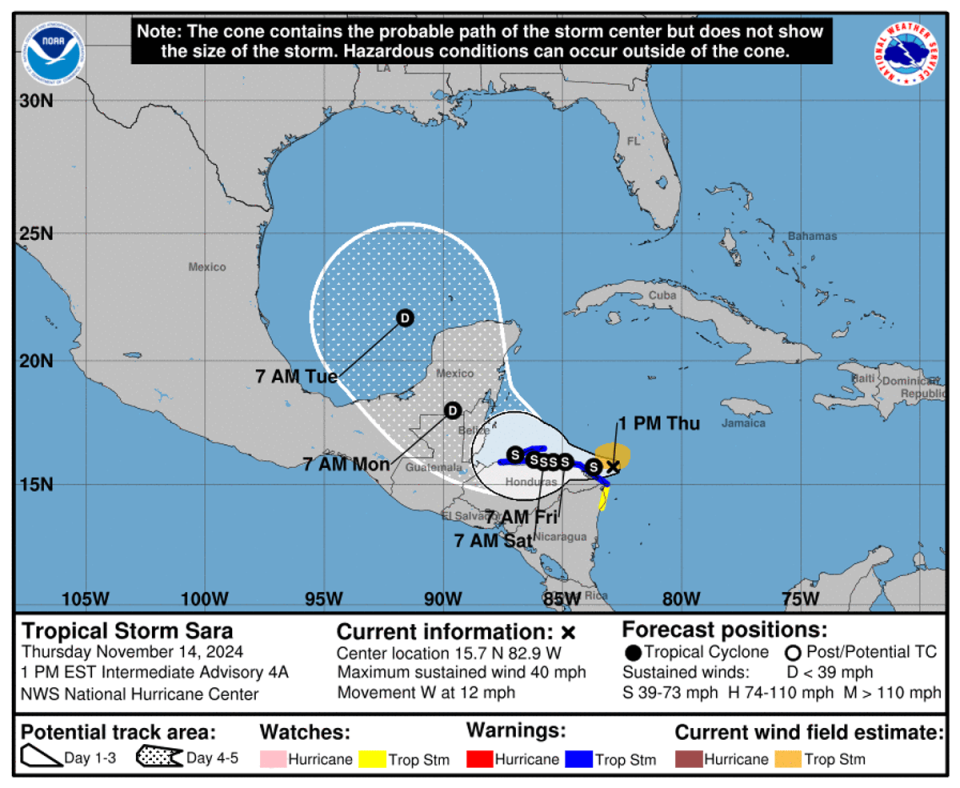Gold fell for a fifth session in a row on Thursday, with expectations for a more restrictive monetary policy and less geopolitical risk under incoming President Donald Trump contributing to a drop in prices to their lowest in over two months.
The precious metal’s longest daily losing streak since mid-February marks a significant shift in prospects for gold, which traded at record highs just two weeks ago.
Gold’s weakness in a reflection of two major themes, said Fawad Razaqzada, market analyst at City Index and FOREX.com. The first is the potential for U.S. monetary policy to remain quite restrictive in 2025 under Trump, than would have otherwise been the case, he said.
The yield on the 10-year Treasury BX:TMUBMUSD10Y is approaching 4.5% against a backdrop of the hawkish repricing of U.S. rates for next year and that means the opportunity cost of holding low- and zero-yielding assets likely gold is rising, he said in market commentary. The hawkish repricing of U.S. rates is also keeping the U.S. dollar DXY and “buck-denominated gold undermined.”
Read: A surging U.S. dollar is hammering emerging-market stocks and metals. Watch out.
The second major factor impacting gold is linked to investors pricing out geopolitical risks, Razaqzada said. Trump won the election “quite comfortably in the end,” giving the markets “hope that the conflicts in the Middle East and between Russia and Ukraine could end when Trump starts his presidency next year.”
Gold futures based on the most-active contract GC00 last marked a record-high settlement on Oct. 30 at $2,800.80 an ounce on Comex. On Thursday, the December contract GCZ24 settled at $2,572.90, down $13.60, or 0.5%, for the session, at the lowest finish since Sept. 11, according to Dow Jones Market Data. Prices have lost 8.1% from the all-time high finish just over two weeks ago.
Read: Why gold prices are now dropping on the heels of Trump’s win
The precious metal needed a correction and that’s what it’s currently experiencing, Naeem Aslam, chief investment officer at Zaye Capital Markets, told MarketWatch. Recent U.S. inflation data show that there is still some work that needs to be done to tackle inflation and that has led traders to believe the path of interest rate cuts adopted by the Federal Reserve is going to “be more gradual,” he said.
“This is very much influencing the price of gold,” said Aslam said, adding that he believes the metal could touch $2,500 an ounce.
Gold hasn’t traded that low since mid-August.
The continued flow of inflation and labor market data in the U.S. is likely to weaken the possibility of an interest-rate cut next year, said Samer Hasn, senior market analyst at XS.com.
Initial jobless claims fell by 4,000 to 217,000 in the week ending Nov. 9 – the lowest level of claims since May, according to the Labor Department on Thursday. The increase in wholesale prices in the 12 months that ended in October, meanwhile, climbed to 2.4% from 1.9% and matched the highest level in four months.
The data did not significantly change market expectations regarding the next steps of the Federal Reserve, but hopes for a rate cut in the first month of the new year have “diminished, which may justify gold’s continued losses,” said Hasn.
A rate cut of 25 basis points is expected for the Dec. 18 Fed meeting, but the probability of a cut of the same amount for the Jan. 29 is seen at just under 26%, according to the CME FedWatch Tool.
The probability for a cut in January exceeded 60% more than a month ago, said Hasn, citing the FedWatch Tool.
Meanwhile, Michael Armbruster, co-founder and managing partner at Altavest, said that the Trump administration, with the help of a new agency it plans to create called the Department of Government Efficiency (DOGE), could make a “legitimate effort” to reduce government spending and the federal deficit – and that’s the basis for the huge rally in the U.S. Dollar Index and gold’s weakness.
“Trump has surrounded himself with libertarian leaning deficit hawks,” said Armbruster, having chosen Elon Musk and Vivek Ramaswamy to run the DOGE. “It is clear that federal spending is out of control and the sooner this issue is addressed the better. Whether or not team DOGE can bridge a $1.8 trillion deficit does not really matter, it is a big step in the right direction.”
Against that backdrop, gold is moving down to an important level in the $2,500s — that’s “where gold bulls need to make a stand,” he said.
Still, foreign central bank gold demand remains the most important bullish driver for gold prices,” Armbruster said. The World Gold Council’s Juan Carlos Artigas told MarketWatch in late October that purchases of gold by central banks remained strong, but that year-to-date buying at 694 metric tons was below the 2023 record.
Meanwhile, the People’s Bank of China is in a tough spot in terms of the yuan, said Armbruster. Devaluing its currency can help support China’s economy.
China’s central bank “may have no choice but to devalue its currency,” said Armbruster. “As a result, gold is still a compelling investment for the PBOC and foreign central banks.”
Overall, he said he remains bullish on gold, but the “bull case has weakened if the DOGE team successfully makes material cuts to federal government spending.”
EMEA Tribune is not involved in this news article, it is taken from our partners and or from the News Agencies. Copyright and Credit go to the News Agencies, email news@emeatribune.com Follow our WhatsApp verified Channel



